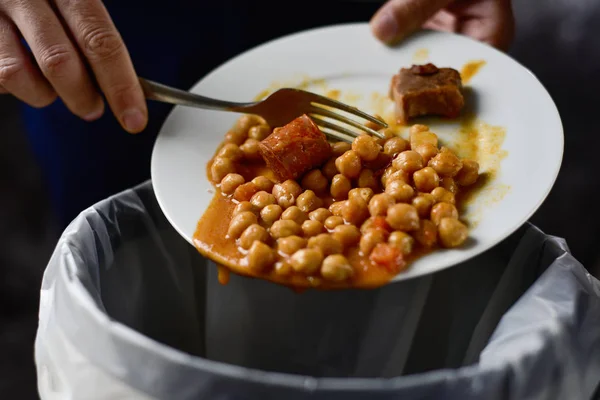In a world increasingly aware of environmental challenges, sustainable living has become more than a trend — it’s a necessity. For Gen Z, sustainability isn’t just a buzzword, it’s a way of life. But here’s the catch: many associate eco-friendly living with higher costs. Whether it’s organic foods, ethically produced clothes, or eco-tech gadgets, going green often seems to come with a higher price tag.
However, sustainable living doesn’t have to break the bank. In fact, with a few smart strategies, anyone can embrace a more eco-conscious lifestyle while still sticking to a budget. For Gen Z, who are digital natives and typically more attuned to innovation, the opportunity to blend sustainability with frugality has never been better.
Here’s a guide on how to make small, meaningful changes that lead to a big impact — for both the planet and your wallet.
1. Rethink Consumption: Minimalism is Key
The first and most crucial step to sustainable living is to rethink how much we consume. The ‘less is more’ philosophy aligns perfectly with sustainability. While you might think that shopping sustainably means buying eco-friendly products, the truth is that the most sustainable product is often the one you never buy at all.
How to get started:
- Declutter your life: Start by minimizing what you already have. Assess your belongings and donate, sell, or repurpose things you don’t need. This reduces waste and gives your items a second life.
- Adopt a minimalist wardrobe: Capsule wardrobes are trending for a reason. They cut down on the number of items you own, but ensure you have versatile, quality pieces that last longer and can be mixed and matched easily.
2. Buy Second-Hand and Thrift
One of the easiest ways to make a sustainable impact without spending a fortune is by buying second-hand. Fast fashion is one of the biggest contributors to pollution and waste, but thrifting offers a stylish, eco-friendly alternative. Not only can you find unique and trendy pieces at second-hand stores, but you’ll often save a significant amount of money.
Pro tips for thrifting:
- Use apps like Depop and Poshmark: These online platforms let you buy (and sell!) second-hand clothing. You can find gently used items at a fraction of the cost.
- Visit local thrift stores: While it may take some hunting, you can often find great deals on clothing, furniture, and other household items.
- Host clothing swaps: Get your friends together for a swap party! It’s a fun, free way to refresh your wardrobe without contributing to textile waste.
3. DIY Household Cleaners
Store-bought cleaners are often filled with chemicals that aren’t great for the environment or your health. The good news? It’s easy (and inexpensive) to make your own cleaning supplies at home using natural ingredients you likely already have.
DIY recipes to try:
- All-purpose cleaner: Mix equal parts water and white vinegar, add a few drops of essential oil for fragrance, and you’ve got an effective cleaner for most surfaces.
- Glass cleaner: Combine 2 cups of water, ½ cup of white vinegar, and ¼ cup of rubbing alcohol in a spray bottle for streak-free windows and mirrors.
- Baking soda scrub: Use baking soda and water to create a paste that can scrub sinks, tubs, and even grimy stovetops.
4. Conserve Energy and Water
Small changes to how you use energy and water at home can significantly reduce your carbon footprint — and save you money on utility bills.
Energy-saving hacks:
- Unplug devices: Even when turned off, electronics still use energy if they’re plugged in. Make it a habit to unplug devices like chargers, TVs, and computers when not in use.
- Use energy-efficient light bulbs: LEDs use up to 75% less energy than traditional incandescent bulbs and last much longer, making them a smart investment.
- Wash clothes in cold water: Most of the energy used in washing clothes goes to heating the water. Washing in cold not only saves energy but also helps clothes last longer.
Water-saving tips:
- Shorten your showers: Cutting your shower time by just a few minutes can save gallons of water over time.
- Fix leaks: A small drip from a leaky faucet might not seem like a big deal, but it can waste a significant amount of water over time.
- Install low-flow fixtures: Low-flow showerheads and faucets can drastically reduce water usage without sacrificing pressure.
5. Reduce Food Waste and Eat More Plants
Food production is a major source of greenhouse gas emissions, particularly when it comes to meat and dairy. By making small shifts in how we buy, consume, and waste food, we can have a huge impact on the environment — and cut down on grocery costs too.
Strategies to reduce food waste:
- Meal planning: Plan your meals for the week before shopping, and stick to your list to avoid impulse buys and reduce the risk of food spoiling before you can eat it.
- Use leftovers creatively: Instead of throwing out leftovers, get creative. You can often turn yesterday’s dinner into today’s lunch or add it to a new recipe.
- Compost food scraps: If you have space, composting is an excellent way to recycle food waste and create nutrient-rich soil for gardening.
Incorporating plant-based meals:
- Go meatless a few times a week: You don’t have to go full vegan to make an impact. Start by cutting out meat once or twice a week.
- Buy in bulk: Staples like beans, lentils, rice, and grains are not only inexpensive, but they’re also more eco-friendly and can be stored for a long time.
6. Switch to Reusables
Single-use items are one of the biggest contributors to landfill waste. While it might seem insignificant, switching to reusable items can have a significant impact over time. Plus, many reusable products pay for themselves after just a few uses.
Essential reusables to invest in:
- Reusable water bottles and coffee cups: These are easy swaps that not only reduce waste but can save you money (many coffee shops even offer discounts for bringing your own cup).
- Reusable shopping bags: Keep a few reusable bags in your car or by the door so you always have them handy for grocery trips.
- Beeswax wraps: Ditch the plastic wrap in favor of reusable beeswax wraps to keep your food fresh. They’re washable, eco-friendly, and last up to a year.
7. Opt for Public Transport, Biking, or Carpooling
Transportation is a major source of carbon emissions, but there are affordable ways to minimize your personal footprint. Using alternative transportation methods can not only be more sustainable but also save you money on gas, parking, and car maintenance.
Sustainable transportation options:
- Use public transport: Whether it’s the bus, train, or subway, public transport is generally much cheaper and more eco-friendly than driving.
- Bike or walk: For shorter trips, biking or walking is a zero-emission way to get around. Plus, it’s great exercise!
- Carpool with friends: If you do need to drive, try uber carpooling. It’s a fun way to reduce emissions while spending time with friends.
8. Grow Your Own Food
If you have access to outdoor space, growing your own food is an incredible way to live more sustainably. Even if you only have a small balcony, you can still grow herbs, small vegetables, or fruits in containers.
Gardening tips for beginners:
- Start small: Don’t feel like you need to grow an entire vegetable garden right away. Start with herbs, tomatoes, or lettuce — they’re easy and don’t require much space.
- Use organic seeds and soil: For a truly sustainable garden, opt for organic seeds and soil that don’t contain harmful chemicals.
- Compost: If you’re already composting food scraps, you can use that rich soil to help grow your garden.
9. Be Mindful of Your Digital Carbon Footprint
While it might seem like digital activities have no environmental impact, the truth is that everything from streaming videos to cloud storage uses energy — and a lot of it. Being mindful of your digital habits can help reduce your overall carbon footprint.
How to reduce your digital impact:
- Unsubscribe from emails: It takes energy to send and store emails, so clearing out your inbox and unsubscribing from newsletters you don’t read is a small way to cut back.
- Turn off devices: Power down your computer, phone, and other devices when they’re not in use to save energy.
- Stream with care: Streaming high-definition video uses a lot of energy. Consider downloading media for offline use or streaming in standard definition to reduce data use.
10. Advocate for Systemic Change
While individual actions are important, it’s also essential to recognize that big, systemic changes are needed to tackle climate change. As a Gen Z individual, you can use your voice and influence to push for larger shifts in how we live and do business.
Ways to get involved:
- Vote with the planet in mind: Support policies and politicians that prioritize environmental issues.
- Support eco-friendly brands: Whenever possible, choose to spend your money with companies that have strong sustainability practices.
- Educate and inspire others: Share your journey to sustainable living on social media or with friends and family. The more people join the movement, the bigger the impact.
Final Thoughts
Sustainable living on a budget is entirely possible. The key is to start small and be mindful of the daily choices we make. By incorporating just a few of these tips into your life, you can make a big impact on the planet without putting a strain on your wallet.



